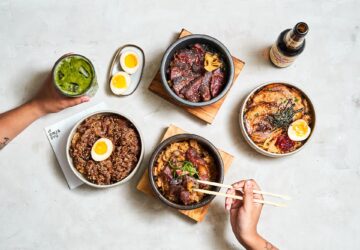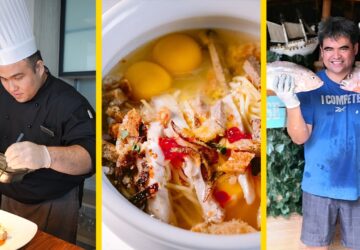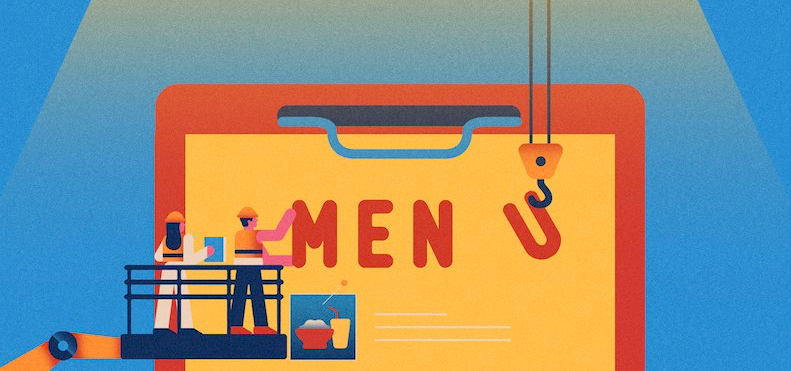Much like a crystal ball, menus give customers a good idea of what the restaurant is about. The decor might tip them off about the kind of cuisine served, but it is essentially the rundown of dishes that will begin to work up customers’ appetites. In the same way that the ambience might draw people closer and encourage inquiries, it is the menu that will eventually have them hooked and lured in. People might see a menu simply as a piece of paper, but the business-minded restaurateur knows that it can be an efficient marketing tool that merits study and attention.
To take full advantage of the menu, one must rely on menu engineering where proper analysis and strategies are employed to increase the profitability and popularity of the enlisted food items. It is a methodical evaluation of the dishes in relation to their contribution to net profits. So while customers see delicious food in print, the managers see potential for a sales increase.
The case of chasing stars
Menu items typically fall under one of four classifications:
- Star = high sales, high profit
- Puzzle = low sales, high profit
- Plow Horse = high sales, low profit
- Dog = poor sales, low profit
Not all items can be Stars and your menu definitely does not require Stars. What it needs is balance.
Consulting for a restaurant that had been open for 24 months was a real eye opener. The owner was concerned and called us to help with their selection, as they had no idea how to update and improve their menu. They relied on gut feel and after having a very strong first 12 months, they noticed a drop in profits in the year that followed. When we analyzed the menu, we discovered that the chef had updated the menu 12 months before and the owner had too many Dogs and Plow Horses on the menu. The pricing strategy was a mess and formulated without logic or planning. They also had removed some of their high-profit items that were not selling (Puzzles). As our plan of action, we advised them to bring some of these dishes back and present them on the menu differently with adjusted prices. Six months into employing this, some of the dishes that initially had not sold before became Stars.
To take full advantage of the menu, one must rely on menu engineering where proper analysis and strategies are employed to increase the profitability and popularity of the enlisted food items.
Consider these rules and actions for each category
Star (High Profit/High Sales)
Do not touch these items. They are the restaurant’s bread and butter and are already bringing you a high margin. Train your staff to push these menu items and encourage your staff to ensure that they sell side dishes to every table.
Puzzle (High Profit/Low Sales)
These are items that need to be played with. They may make money but they do not sell well. There are reasons for this and you must take action to try to turn them into Stars. Tactics that can be used include rewording the description of the item, adjusting the price slightly, positioning it differently on the menu, or highlighting it as a chef’s recommended dish. You also need to analyze if people are not ordering the dish because it is not appealing or because it does not receive good feedback.
Plow Horse (High Sales/Low Profit)
These items make your team work hard but do not reward you financially. They are like a horse plowing the field; it does get the job done but only achieves 1/10 of what a machine could do. These menu items are popular and sell well, therefore you cannot and should not disregard them. Instead, you should adjust the price or portion size to increase your profit margin.
Dog (Low Profit/Low Sales)
Get rid of them! There’s no point for them to be there.

The case of the 100-dish menu
Others factors in menu engineering are design, positioning, descriptions, and the use of code, pictures, font color, and font size—elements that define the restaurant’s identity.
Menu design should not be an afterthought, as it is one of the most crucial components of an establishment. It can make the decision for the customer and spell the difference between a customer staying or leaving. There are so many questions to ask when designing the menu. What font should be used? Should the menu include pictures? Is the menu flexible enough to be changed easily? Can it be updated frequently? When the menu is dirty or stained, can it be cleaned easily or does it have to be totally replaced? These are just some of the basic questions any restaurateur needs to go through. The unfortunate reality is that most people and establishments don’t care about their menus and just try to make something that looks cool or saves them money.

A client of ours was opening a new establishment and wanted a menu that would allow the chef to adjust the items almost on a daily basis. There was one problem though: the menu he created had over 100 items in it. Yes, 100! To have a menu that is flexible and can be adjusted almost daily, it should be kept to a minimum and have a specific identity, otherwise the changes would be lost.
Large menus have a tendency to lack focus. They take longer to order from and also require more ingredients. A large menu also means longer ticket times or a lot of items pre-cooked and then reheated, thus diminishing quality. When you have too many different dishes cooking at the same time and not enough of the same items in the same pans, you’ll spend more time producing orders. As a consequence, each table takes longer to serve, and you’ll turn them over at a slower rate.
Menu design should not be an afterthought, as it is one of the most crucial components of an establishment. It can make the decision for the customer and spell the difference between a customer staying or leaving.
After studying the situation, we advised the client to design a stable menu with pictures and a well spaced out design. We did not reduce their original menu much but for their special menu items, we purchased an LED screen, which was built into the restaurant design and showcased the specials as well as images of their drinks and dishes. This worked exceptionally well with no additional costs in printing, ink, and labor hours. The establishment also saw an increase in drink sales and Puzzle dishes, as they showcased images of their low-selling and high-profit menu items.
In today’s fast-paced and ever-changing world, menus are being redefined. They are becoming more creative and are introducing the world of technology into the mix. People are using natural components like stones, wood, bamboo, and coconut shell; reinventing the blackboard and the clip menu; and even introducing tablets. All of these are great, but the rules and logic behind how the menu is written, structured, and presented have not changed for centuries. And for good reason. Because they work.
Industry notes
1. Group your most profitable items together. Build your menu around popular items.
2. Let your menu be a tour guide. This can be accomplished through photos and/or creative text.
3. Keep menus clean. No grease and no food or water stains. Get rid of worn-out or torn menus. Make sure that they are checked before every service time. Make sure your staff is thoroughly trained and has memorized the menu. Make sure that you have items for your staff to upsell. Sides, small appetizers, and snacks are perfect ways to increase customer spend.
4. Update your menu and prices at least twice a year.
5. If your menu is unique, consider having descriptions for the dishes.
6. Don’t forget to put your menu online and ensure that it is kept up-to-date. It should be easily accessible from a mobile phone.
Originally published in F&B Report Vol. 13 No. 6





